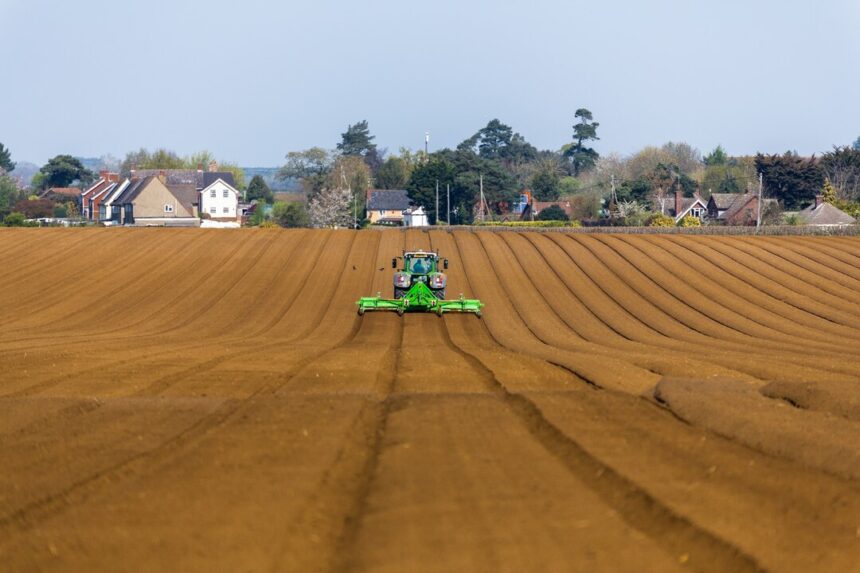A successful planting season begins long before seeds touch the soil. For farmers, preparing farm machinery plays a crucial role in ensuring efficiency, reducing costs, and maximizing yields. Without proper machinery preparation, unexpected breakdowns, uneven planting, or wasted inputs can jeopardize an entire season. Here’s a detailed guide on how to prepare your farm machinery to set the stage for a fruitful planting season.
1. Inspect All Farm Machinery Thoroughly
Before planting begins, conduct a detailed inspection of all equipment, including tractors, planters, sprayers, and seeders. Check for wear and tear, leaks, loose bolts, or damaged parts that could cause problems during use.
Checklist:
- Inspect tires for proper inflation and tread.
- Check hydraulic systems for leaks or low fluid levels.
- Test lights, brakes, and steering for safety and reliability.
Pro Tip: Create a pre-season inspection checklist to ensure nothing is overlooked.
2. Perform Routine Maintenance
Farm machinery requires routine servicing to run efficiently. Delaying maintenance can lead to costly downtime during critical planting windows.
Key Maintenance Steps:
- Change oil and filters to ensure smooth engine performance.
- Lubricate all moving parts to reduce friction and prevent wear.
- Replace worn-out belts, bearings, and hoses.
Pro Tip: Follow the manufacturer’s maintenance schedule and use genuine spare parts for replacements.
3. Calibrate Equipment for Accuracy
Improperly calibrated machinery can result in uneven planting, over-application of fertilizers, or seed wastage. Calibration ensures that your equipment applies inputs accurately, reducing costs and improving crop uniformity.
Steps for Calibration:
- Test seed planters to confirm spacing and depth accuracy.
- Calibrate sprayers to apply the correct volume of fertilizer or pesticide.
- Adjust tillage equipment for consistent soil preparation.
Pro Tip: Recalibrate equipment if you change seed types, fertilizers, or crop varieties.
4. Update Software and GPS Systems
Many modern farm machines are equipped with GPS and precision agriculture technology. Outdated software can lead to inaccuracies in planting, mapping, or monitoring.
Action Steps:
- Update GPS systems and farm management software.
- Test precision planting systems to ensure accurate mapping.
- Verify that data connectivity and sensors are working correctly.
Pro Tip: Back up all field data before updating software to prevent data loss.
5. Stock Up on Spare Parts and Tools
Breakdowns during planting can result in costly delays. Having spare parts and tools on hand ensures quick repairs without waiting for suppliers.
Recommended Inventory:
- Extra tires, belts, and hoses.
- Filters, spark plugs, and lubricants.
- A well-equipped toolbox with wrenches, screwdrivers, and pliers.
Pro Tip: Partner with a reliable local supplier for fast access to spare parts during emergencies.
6. Train Workers on Machinery Use
Untrained operators can misuse machinery, causing damage or inefficiencies. Proper training ensures that workers can operate, maintain, and troubleshoot equipment effectively.
Training Tips:
- Provide hands-on demonstrations of each machine.
- Teach workers how to identify and report mechanical issues.
- Emphasize safety protocols, such as proper machine shut-down procedures.
Pro Tip: Arrange refresher courses for experienced workers to update their skills.
7. Test Machinery Before Planting
Testing machinery in the field before planting helps identify potential problems and allows time for adjustments.
Steps for Testing:
- Run seeders and planters over a small test plot to check for proper seed placement.
- Test sprayers for even application and nozzle functionality.
- Check for unusual sounds, vibrations, or performance issues.
Pro Tip: Simulate real planting conditions during testing to get accurate results.
8. Prepare Storage and Transportation Equipment
Many farmers overlook the importance of proper storage and transportation. Poor storage conditions can damage machinery, while inadequate transportation can delay operations.
Best Practices:
- Store equipment in clean, dry sheds to prevent rust and corrosion.
- Inspect trailers and transport vehicles for safety and functionality.
- Secure tools and equipment properly during transit.
Pro Tip: Invest in tarpaulins or covers to protect machinery from dust and weather when in transit or stored outdoors.
9. Adopt Preventative Maintenance Practices
Waiting for machinery to break down before addressing issues can be costly and time-consuming. Preventative maintenance minimizes downtime and extends the lifespan of your equipment.
Steps:
- Perform regular inspections during the planting season.
- Monitor engine performance and fuel efficiency.
- Clean machinery after use to prevent dirt buildup.
Pro Tip: Use technology, like sensors, to monitor equipment performance in real time.
10. Plan for Contingencies
Even with the best preparation, unexpected issues can arise. Having a contingency plan ensures you’re ready to address challenges without significant delays.
Contingency Measures:
- Keep backup equipment ready, such as an extra tractor or planter.
- Have emergency contacts for mechanics or technicians.
- Set aside a budget for unforeseen repairs.
Pro Tip: Collaborate with neighboring farmers to share resources during emergencies.
A successful planting season hinges on proper preparation and maintenance of farm machinery. By following these steps, South African farmers can minimize disruptions, maximize efficiency, and set the foundation for a productive season. Remember, well-maintained equipment not only boosts yields but also reduces long-term costs, ensuring sustainability and profitability for your farm.
Join 'Farmers Mag' WhatsApp Channel
Get the latest Farming news and tips delivered straight to your WhatsApp
CLICK HERE TO JOIN






